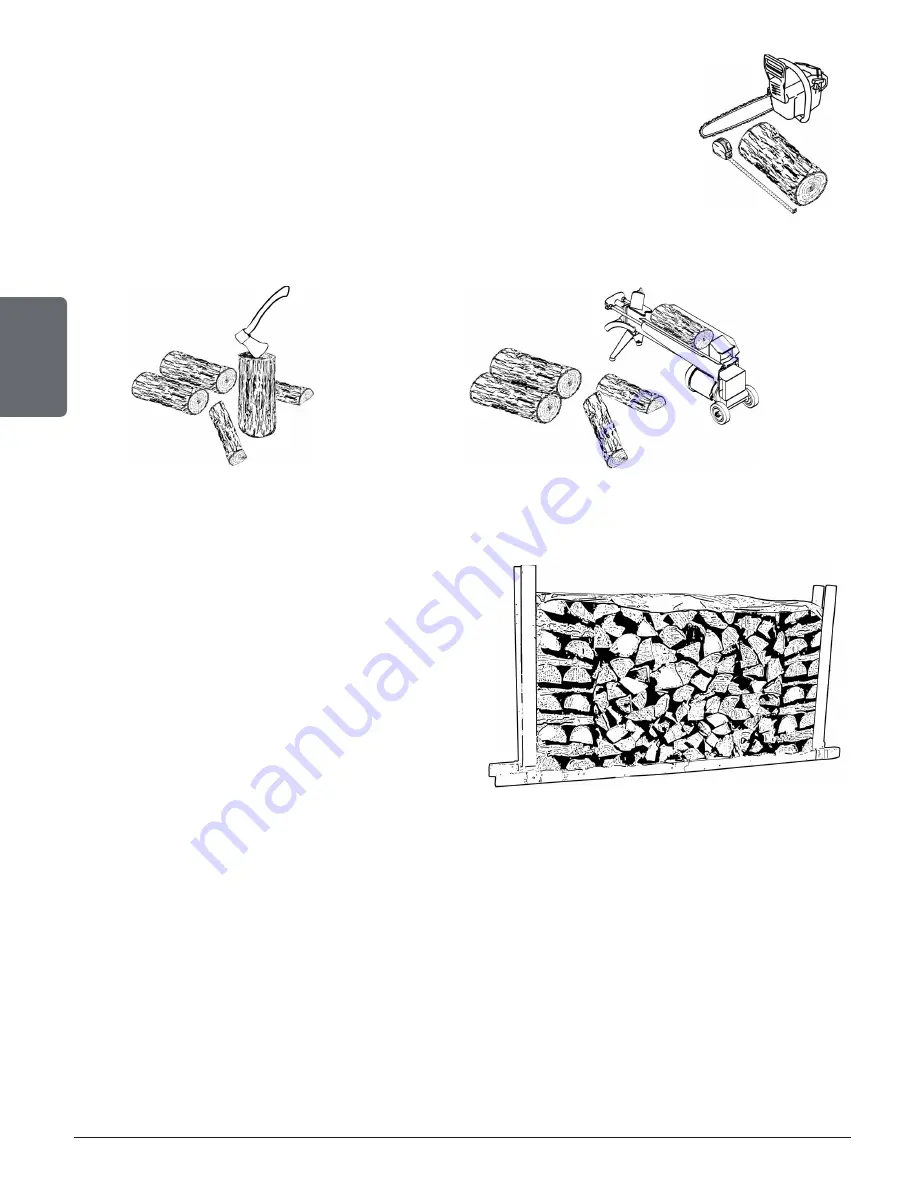
Page 18
Installation and operation manual – Chic-Choc woodburning cookstove
ENGLISH
4.2 Log Length
Logs should be cut at least 1" (25 mm) shorter than the firebox so they fit in
easily. Pieces that are even slightly too long makes loading the stove very
difficult. The most common standard length of firewood is 16" (400 mm).
4.3 Piece Size
Firewood dries more quickly when it is split. Large unsplit rounds can take
years to dry enough to burn. Even when dried, unsplit logs are difficult to
ignite because they don’t have the sharp edges where the flames first catch.
Wood should be split to a range of sizes, from about 3" to 6" (75 mm to 150 mm) in cross
section. Having a range of sizes makes starting and rekindling fires much easier.
4.4 Drying Time
Firewood that is not dry enough to burn is
the cause of most complaints about wood
burning appliances. Continually burning green
or unseasoned wood produces more creosote
and involves lack of heat and dirty glass door.
Firewood with a moisture content between 15%
and 20% will allow the stove to produce its
optimal output.
Here are some facts to consider in
estimating drying time:
− Firewood bought from a dealer is rarely dry enough to burn, so it is advisable to buy the wood in
spring and dry it yourself;
− Drying happens faster in dry weather than in a damp climate;
− Drying happens faster in warm summer weather than in winter weather;
− Small pieces dry more quickly than large pieces;
− Split pieces dry more quickly than unsplit rounds;
− Softwoods like pine, spruce, poplar, and aspen take less time to dry than hardwoods. they can be
dry enough to burn after being stacked to air dry only for the summer months;
− Hardwoods like oak, maple and ash can take one, or even two years to dry fully, especially if the
pieces are big;






























